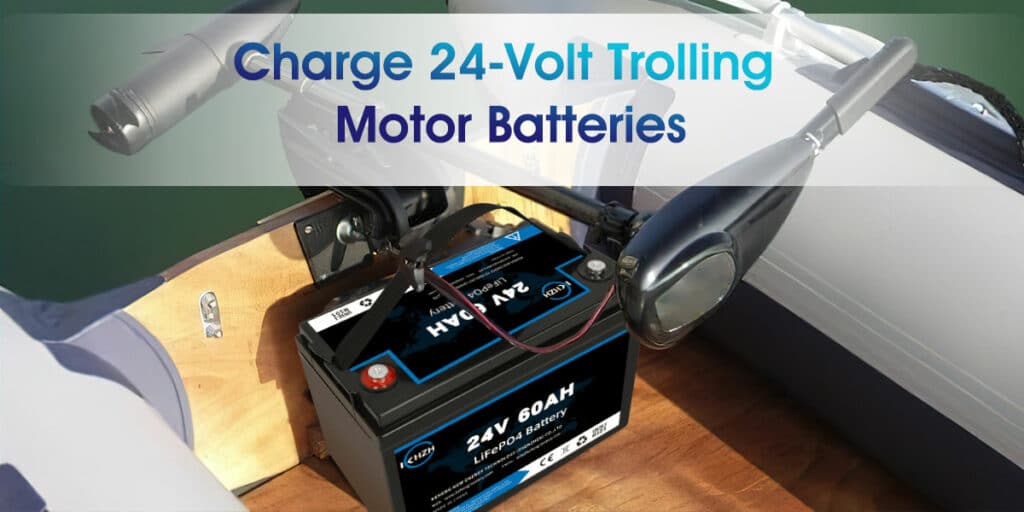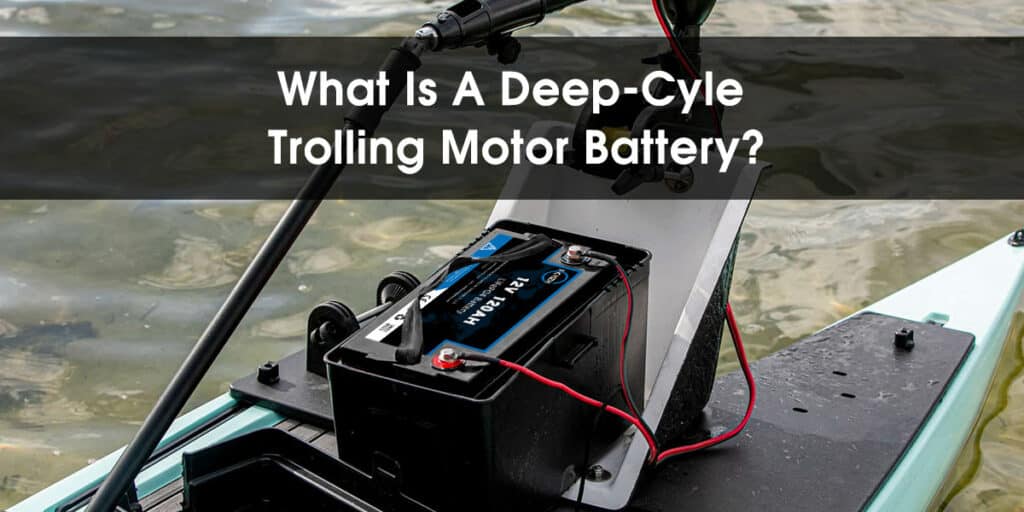introduction
The Batteries for Trolling Boat Motors

A peaceful day on the open water, gently maneuvering your boat to discover a hidden fishing spot, is an experience to be cherished. Behind that serenity lies a critical component that powers your boating adventures – the batteries in your Electric Outboard Motor.
These silent workhorses provide the energy necessary to propel your trolling motor, allowing you to navigate the waters with precision and finesse. Understanding their importance is crucial for any avid angler or boating enthusiast.
Cracking the Trolling Motor Battery Dilemma
Choosing the ideal battery for your trolling motor is akin to selecting the heart of your boat’s powertrain. Various factors must be carefully considered to ensure optimal performance and longevity.
From battery type and capacity to voltage requirements and maintenance protocols, each aspect plays a crucial role in determining the efficiency and reliability of your trolling motor unit. An in-depth understanding of these critical considerations will enable you to make informed decisions to complement your boating endeavors.
Lead-Acid Batteries
Choosing between deep-cycle lead-acid and dual-purpose lead-acid batteries
When selecting a battery for your trolling boat motors, one of the critical decisions is whether to choose a deep cycle or dual-purpose lead acid battery. Deep cycle batteries are designed to provide continuous power for long periods, making them ideal for trolling motors that need to run continuously at different speeds.
On the other hand, dual-purpose batteries are more versatile and can be used to start the engine and power accessories such as lights or electronics. Deep-cycle batteries are generally recommended for trolling motors because they can withstand repeated discharge and charge cycles. In contrast, dual-purpose batteries have the advantage of being able to be used for various purposes on board.
Advantages and disadvantages of lead-acid batteries for trolling motors
Lead-acid batteries have been a staple in marine applications for many years, largely thanks to their affordability and wide availability. They come in various sizes and capacities to suit different trolling motor setups, making them popular with crews. One of the main advantages of lead-acid batteries is their rugged construction and ability to withstand harsh marine environments.
However, these batteries tend to be heavier than other types of batteries, which can affect the overall weight distribution of the boat. In addition, lead-acid batteries require regular maintenance, such as checking water levels and ensuring proper ventilation while charging.
Lithium-ion batteries

Superiority of Lithium-Ion Batteries for Trolling Motors
Lithium-ion batteries have revolutionized the marine industry with their superior performance. These advanced batteries offer higher energy density than lead-acid batteries, providing more power in a lighter package.
For Keheng Electric Outboard Motor, this means longer run times on the water without sacrificing performance. In addition, lithium-ion batteries last longer and can withstand more charge/discharge cycles than traditional lead-acid batteries, making them a cost-effective investment in the long run.
Sailing in the marine environment with lithium-ion batteries
While lithium-ion batteries offer numerous advantages in trolling motor applications, there are some special considerations when using them in the marine environment. One key factor is ensuring proper water and moisture protection, as exposure to water can damage lithium-ion batteries.
It is also important to monitor temperature levels during operation and charging, as extreme heat or cold can affect battery performance. Investing in high-quality marine-grade lithium-ion batteries specifically designed to withstand the harsh conditions found on boats is also recommended.
Understanding Ampere-hour (Ah) Ratings and What They Mean for Trolling Motor Use
The Ampere-hour (Ah) rating is one of the most critical factors when choosing the best batteries for trolling boat motors. The amp-hour rating indicates how much energy a battery can provide in a given period.
Higher amp-hour ratings are generally preferred for trolling motor use because they provide longer run times on the water. A higher amp-hour rating means that the battery can sustain the trolling motor’s power consumption for a more extended period before it needs to be recharged.
The current battery rating must match the trolling motor’s power requirements. Trolling motors with higher thrust or trolling motors used in challenging water conditions may require a battery with a higher charge rating to ensure optimal performance.
In addition, factors such as wind speed, current, and boat size can affect the choice of battery current rating. Understanding the relationship between charge ratings and the specific use of your trolling motor will help you select a battery that will effectively meet your needs.
Voltage Requirements for Different Types of Trolling Motors (12V, 24V or 36V)
Voltage compatibility is another important consideration when choosing a batteries for trolling boat motors. Trolling motors are available in various voltage configurations, such as 12V, 24V, or 36V, each of which offers different levels of power and performance. Matching your battery system’s voltage output to your trolling motor’s requirements is critical to achieving optimum efficiency and longevity.
For example, if you have a 12V trolling motor, using a single 12V battery or connecting multiple batteries in parallel will provide an adequate power supply. On the other hand, if you have a 24V or 36V trolling motor installed, you must connect multiple batteries in series to achieve the required voltage output.
Understanding the voltage requirements of your trolling motor ensures that the battery you select meets its operational needs and maximizes its overall performance on the water. By carefully considering amp-hour ratings and voltage requirements when choosing batteries for your trolling boat motor unit, you can ensure reliable power and extended runtime during your fishing adventures while optimizing overall performance efficiency.
Battery Care and Maintenance
Tips for Extending Trolling Motor Battery Life
Proper maintenance of your trolling motor battery is critical to ensuring its longevity and optimal performance. One of the most important tips is to inspect the battery for signs of corrosion or damage regularly.
Clean the terminals and connections with a mixture of baking soda and water to prevent buildup from preventing proper operation. Additionally, make sure that the battery is adequately secured to avoid premature wear and tear due to unnecessary vibration.
Another critical tip for extending the life of your trolling motor battery is to avoid over-discharging it. Deep cycle batteries are designed to handle deeper discharges, but charging them before they reach critical levels is still necessary.
It would help to keep your batteries from falling below 50% capacity regularly, as this can drastically shorten their lifespan. Invest in a reliable battery monitor or voltage indicator to accurately track battery levels while on the water.
Top Brands and Models
Best in the business: Minn Kota
Regarding trolling motor batteries, Minn Kota is one of the best. Known for its high-quality marine products, Minn Kota offers a range of batteries designed specifically for trolling motors.
Their batteries are known for their reliability, longevity, and consistent performance on the water. Whether you’re an experienced angler or a novice, investing in Minn Kota batteries can significantly enhance your trolling motor experience.
Optima: Best in Innovation
Optima is another top brand that is making a name for itself in the trolling motor battery world. Known for its cutting-edge technology and superior build quality, Optima batteries are favored by many crews who demand the best for their offshore adventures. Optima’s unique SpiralCell design ensures maximum vibration resistance and efficient power delivery, making it the ideal choice for trolling motors. Optima’s unique SpiralCell design ensures maximum vibration resistance and efficient power transfer, making it ideal for trolling motors, where reliability is critical.
Keheng: Reliability you can trust

60V 120Ah Electric Outboard Motor Battery
Keheng has been a trusted name in the battery industry for many years, and its line of marine batteries lives up to that reputation. Keheng offers a wide range of batteries for trolling boat motors to meet various power needs and budgets. With superior performance, durability, and value for money, Cohen batteries have earned many boaters’ trust to keep their trolling motors running smoothly during long fishing trips.
Tips for Maximizing Battery Performance
Efficient Power Management
The key to optimizing the performance of your trolling boat motor battery is to master efficient power management techniques. One effective strategy is to vary the trolling motor’s speed depending on water conditions and your fishing requirements.
Running the motor at a lower speed can save significant battery power when navigating calm waters or fishing in shallow areas. Also, minimizing sudden accelerations and decelerations will help maintain a steady power draw and extend battery life.
Ensure longevity and reliability
Regular maintenance is critical to maximizing the performance of your trolling motor battery. Keep the terminals clean and corrosion-free by gently scrubbing them with baking soda and water.
Periodically inspect the battery case for signs of damage or leakage. Properly securing the battery to prevent excessive vibration during operation can prevent internal damage and extend its life.
Invest in a battery monitor: Real-time efficiency.
Consider investing in a battery monitor or gauge to monitor your trolling motor’s battery level while fishing effectively. These devices display the remaining charge in real time, allowing you to adjust your usage accordingly and avoid accidentally draining the battery on the water. Some advanced monitors even offer features such as voltage readings, discharge rates, and low battery alerts, providing comprehensive data that lets you make informed decisions about power consumption while fishing.
Conclusion
Choosing the best batteries for trolling boat motors requires consideration of various factors such as battery type, capacity, and maintenance requirements. By choosing a high-quality battery that suits your specific needs, along with the necessary accessories and innovative technology, you can ensure optimal performance and a longer lifespan for your trolling motor unit.
Adopting advanced marine battery technology improves efficiency and promotes sustainable boating practices. With the proper knowledge and equipment, every fishing adventure can be powered by a reliable battery that combines performance with environmental awareness.




